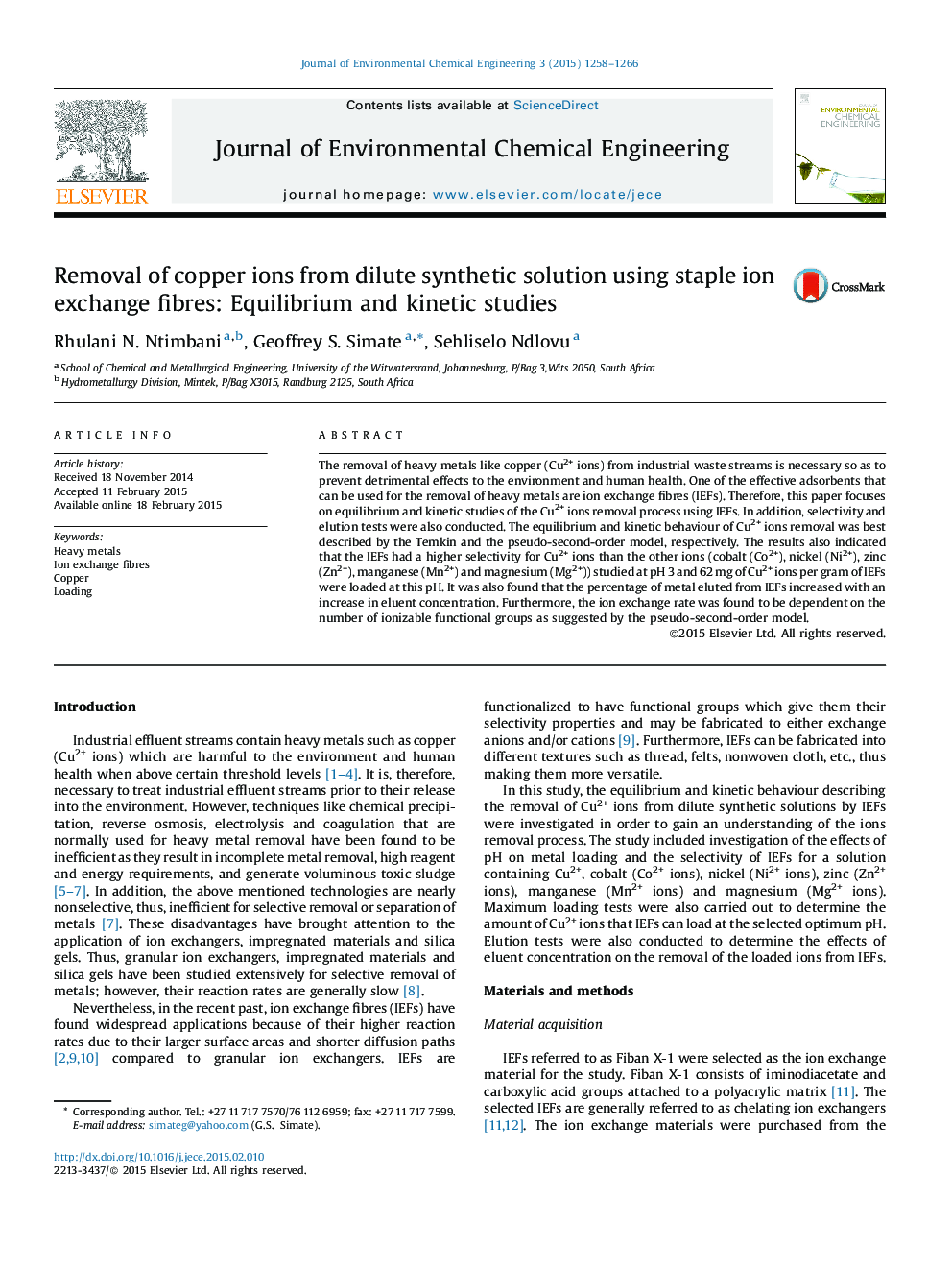| Article ID | Journal | Published Year | Pages | File Type |
|---|---|---|---|---|
| 222355 | Journal of Environmental Chemical Engineering | 2015 | 9 Pages |
•The IEFs were used to selectively remove Cu2+ ions.•The IEFs loaded a maximum of 62 mg of Cu2+ ions per gram of IEFs.•The equilibrium behaviour of Cu2+ ions removal was best described by the Temkin model.•The kinetic behaviour of Cu2+ ions removal was best described by the pseudo-second-order model.•Extent of elution increased with an increase in eluent concentration.
The removal of heavy metals like copper (Cu2+ ions) from industrial waste streams is necessary so as to prevent detrimental effects to the environment and human health. One of the effective adsorbents that can be used for the removal of heavy metals are ion exchange fibres (IEFs). Therefore, this paper focuses on equilibrium and kinetic studies of the Cu2+ ions removal process using IEFs. In addition, selectivity and elution tests were also conducted. The equilibrium and kinetic behaviour of Cu2+ ions removal was best described by the Temkin and the pseudo-second-order model, respectively. The results also indicated that the IEFs had a higher selectivity for Cu2+ ions than the other ions (cobalt (Co2+), nickel (Ni2+), zinc (Zn2+), manganese (Mn2+) and magnesium (Mg2+)) studied at pH 3 and 62 mg of Cu2+ ions per gram of IEFs were loaded at this pH. It was also found that the percentage of metal eluted from IEFs increased with an increase in eluent concentration. Furthermore, the ion exchange rate was found to be dependent on the number of ionizable functional groups as suggested by the pseudo-second-order model.
Graphical abstractFigure optionsDownload full-size imageDownload as PowerPoint slide
